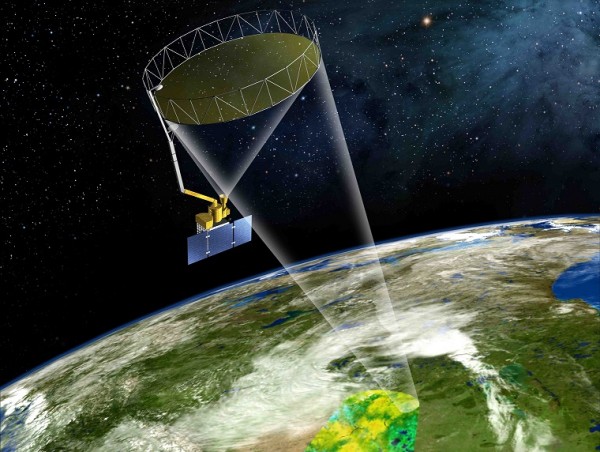NASA to Launch Satellite that Tracks Earth's Moisture
| Ana Verayo | | Jan 05, 2015 06:02 AM EST |
(Photo : NASA) SMAP will create the planet's first soil moisture maps.
NASA will soon launch a satellite that will study and combat the effects of extreme weather phenomena such as droughts by measuring the moisture found in soil.
The launch of the Soil Moisture Active Passive (SMAP) satellite is scheduled for January 29 at 9:20 a.m. EST at Vandenberg Air Force Base, California. The satellite is unique as it will have the largest rotating mesh antenna to be launched into space.
Like Us on Facebook
According to SMAP instrument manager, Wendy Edelstein, this antenna is called a spinning lasso measuring 19.7 feet in diameter. NASA Jet Propulsion Lab engineers took the design of SMAP as a challenge and designed the satellite in such a way it can fit into a one foot by four feet space.
The antenna will spin at some 14 revolutions per minute or about one rotation every four seconds.
SMAP will use two microwave instruments to map the Earth every two days. It will measure the planet's current soil moisture two inches beneath its surface. Data will provide scientists and farmers sufficient data to build soil moisture maps and give reliable warnings about upcoming droughts.
This important information about upcoming droughts and weather patterns will help farmers adjust and change their irrigation patterns; delay planting crops and try other strategies to save crops and make agriculture processes more efficient.
Many farmers only rely on their own experience to figure out the moisture in soil. SMAP will give them better insights about the importance of soil moisture assessment.
According to Narendra Das, a scientist from SMAP's science team at JPL, SMAP will predict how dramatic or extreme droughts will become thereby helping farmers recover from droughts.
TagsNASA Launches New Satellite to Track Earth's Moisture, NASA, US, SMAP, satellite NASA spinning lasso earth soil moisture
©2015 Chinatopix All rights reserved. Do not reproduce without permission
EDITOR'S PICKS
-

Did the Trump administration just announce plans for a trade war with ‘hostile’ China and Russia?
-

US Senate passes Taiwan travel bill slammed by China
-

As Yan Sihong’s family grieves, here are other Chinese students who went missing abroad. Some have never been found
-

Beijing blasts Western critics who ‘smear China’ with the term sharp power
-

China Envoy Seeks to Defuse Tensions With U.S. as a Trade War Brews
-

Singapore's Deputy PM Provides Bitcoin Vote of Confidence Amid China's Blanket Bans
-

China warns investors over risks in overseas virtual currency trading
-

Chinese government most trustworthy: survey
-

Kashima Antlers On Course For Back-To-Back Titles
MOST POPULAR
LATEST NEWS
Zhou Yongkang: China's Former Security Chief Sentenced to Life in Prison

China's former Chief of the Ministry of Public Security, Zhou Yongkang, has been given a life sentence after he was found guilty of abusing his office, bribery and deliberately ... Full Article
TRENDING STORY

China Pork Prices Expected to Stabilize As The Supplies Recover

Elephone P9000 Smartphone is now on Sale on Amazon India

There's a Big Chance Cliffhangers Won't Still Be Resolved When Grey's Anatomy Season 13 Returns

Supreme Court Ruled on Samsung vs Apple Dispute for Patent Infringement

Microsoft Surface Pro 5 Rumors and Release Date: What is the Latest?











